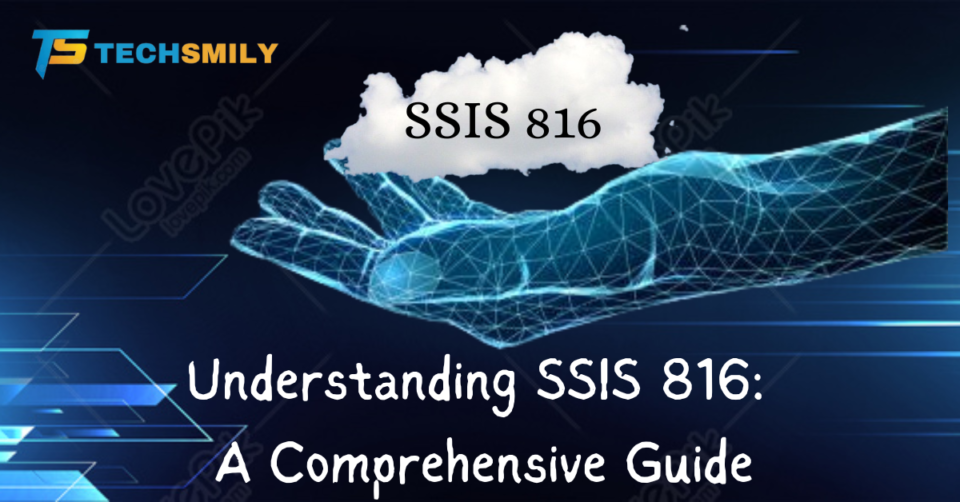SSIS-816 refers to a specific identifier within the realm of SQL Server Integration Services (SSIS), which is a platform designed for data integration and workflow applications. SSIS helps developers and businesses automate data-related tasks such as extraction, transformation, and loading (ETL) of data, offering a flexible framework for managing complex data migration processes.
The code SSIS-816 may represent a version, error code, or specific function related to SSIS processes. In this article, we explore the purpose of SSIS, the significance of error codes like SSIS-816, and how SSIS serves businesses in managing large volumes of data efficiently.
What is SSIS and Why is it Important?
SQL Server Integration Services (SSIS) is a powerful tool within Microsoft’s SQL Server that automates and streamlines ETL (Extract, Transform, Load) processes. It enables developers to:
- Extract data from multiple sources (databases, Excel files, flat files, etc.).
- Transform the data to meet business needs, such as cleaning, filtering, and aggregating.
- Load the data into a destination system like a data warehouse or database.
For businesses dealing with large volumes of data, SSIS is essential in optimizing workflows, reducing manual data processing, and ensuring high data accuracy and reliability.
The Role of Error Codes Like SSIS-816
When working with SSIS, encountering error codes like SSIS-816 can be frustrating. These error codes provide insight into what went wrong during the ETL process. SSIS-816 typically relates to a specific error within the SSIS pipeline that requires troubleshooting.
Common causes for such errors include:
- Incorrect configurations of data flow components.
- Incompatible data types or format mismatches during data transformation.
- Network or database connectivity issues.
- Resource limitations such as insufficient memory or CPU during the process.
Errors like SSIS-816 serve as valuable tools for developers, helping them diagnose and resolve problems quickly. The error message associated with SSIS-816 often provides details that guide developers to the exact issue, allowing for efficient debugging.
How to Troubleshoot SSIS-816 Errors
If you encounter an SSIS-816 error, here are some steps to troubleshoot and resolve it:
- Check the error message: The error message will often give details about the specific problem. Look for clues like component names or data type mismatches.
- Validate data source and destination: Ensure that your data source and destination are properly configured and compatible with each other.
- Examine data flow transformations: Review the transformations in your data flow. Errors often occur due to mismatched data types or improper conversions.
- Increase resource allocation: If the error is related to performance issues, consider increasing the memory or CPU resources allocated to the SSIS process.
- Use debugging tools: SSIS provides built-in logging and debugging tools. Enable logging in your package to get a detailed view of the error.
Best Practices for Avoiding SSIS Errors
To minimize the likelihood of encountering errors like SSIS-816, it’s essential to follow best practices when working with SSIS:
- Test your packages frequently during development to catch errors early.
- Monitor performance and optimize your data flow to avoid resource bottlenecks.
- Use appropriate data types and ensure that they are compatible between the source and destination.
- Implement logging and error-handling mechanisms to capture and address issues as they arise.
FAQs About SSIS-816
1. What does SSIS-816 mean?
SSIS-816 refers to a specific error code or identifier in SQL Server Integration Services, commonly associated with issues in the data flow process during ETL operations.
2. How do I resolve an SSIS-816 error?
To resolve SSIS-816, review the error message, validate your data source and destination configurations, and troubleshoot the data flow transformations. Debugging tools in SSIS can also help in pinpointing the issue.
3. What are the common causes of SSIS-816 errors?
Common causes include incorrect configurations, data type mismatches, network or database connectivity issues, and insufficient system resources during execution.
4. How can I prevent SSIS-816 errors in the future?
You can prevent SSIS-816 errors by following best practices such as thorough testing, proper resource allocation, using compatible data types, and enabling logging to catch potential issues early.
5. Is SSIS-816 a common error?
SSIS-816 may not be a commonly documented error code, but it can occur depending on the specific setup or issues encountered in an SSIS package. The frequency of encountering this error varies based on project complexity.
6. Can SSIS handle large volumes of data without errors?
Yes, SSIS is designed to handle large volumes of data, but careful configuration, performance monitoring, and adherence to best practices are crucial to avoid errors like SSIS-816.
Conclusion
Understanding and managing errors like SSIS-816 is crucial for developers working with SQL Server Integration Services. By adhering to best practices and efficiently troubleshooting errors, you can ensure smooth ETL operations and maintain data integrity within your projects. With the right approach, SSIS remains a robust tool for managing complex data workflows.

